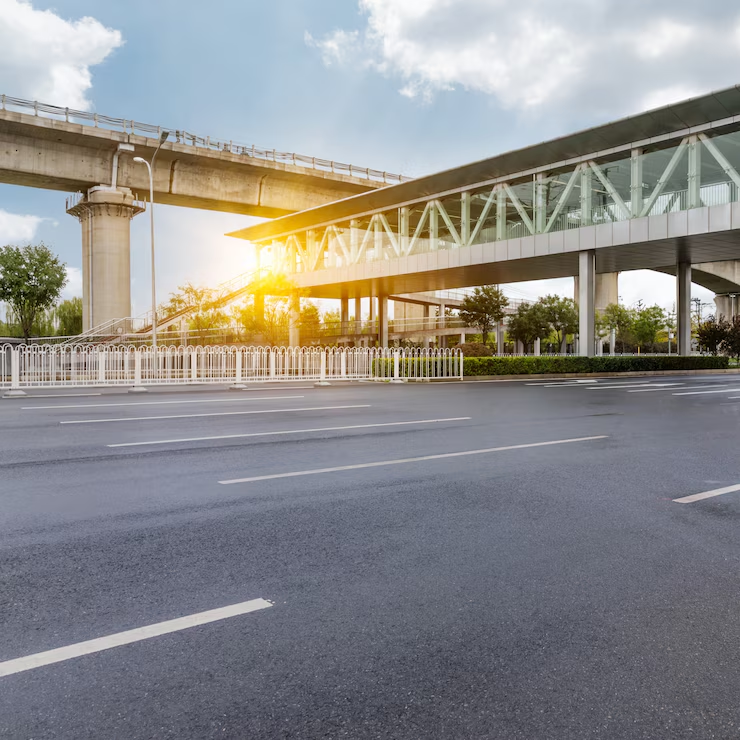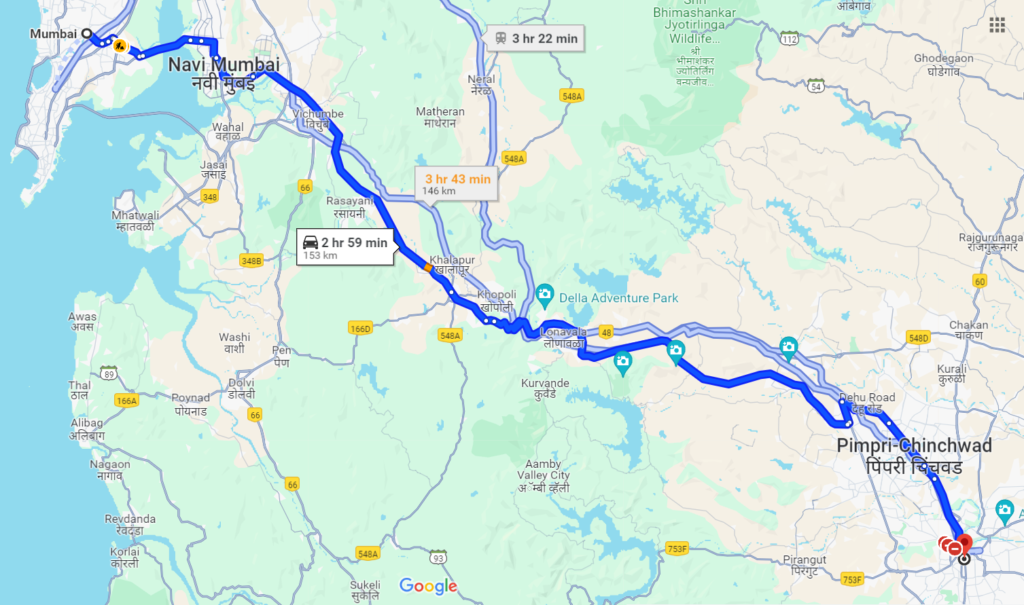Introduction:
The Mumba Pune Expressway, officially named the Yashwantrao Chavan Mumbai Pune Expressway, is a major six-lane route that replaced the older National Highway 4 (NH-4), a popular connection between Mumbai and Pune., this 94-kilometer expressway has significantly reduced travel time between Mumbai, India’s financial hub, and Pune, a key center for automobile manufacturing and education.
Mumbai Pune Expressway: An In-Depth Overview
The Mumbai Pune Expressway, officially known as the Yashwantrao Chavan Mumbai Pune Expressway, is a pivotal infrastructure project in India. It connects Mumbai, the financial capital of India, with Pune, a major educational and industrial hub in Maharashtra. This six-lane expressway has played a crucial role in reducing travel time and enhancing connectivity between these two significant cities.
1. Overview
- Length: 94.5 kilometers
- Construction Cost: ₹1,630 crore
- Number of Lanes: 6 (Expandable to 8)
- Starting Point: Kalamboli, Navi Mumbai, Raigad District
- Ending Point: Ravet, Pune
Also Read: Bangalore Chennai Expressway: Route Map, Cost, Progress, and More
2. Mumbai Pune Expressway History and Development
Initial Feasibility and Planning
- 1990: RITES was tasked with studying the feasibility of a new expressway between Mumbai and Pune.
- 1994: The estimated cost of the project was ₹11.46 billion.
- 1997: The Government of Maharashtra handed over the construction to Maharashtra State Road Development Corporation (MSRDC) on a build-operate-transfer basis, allowing toll collection for 30 years.

Construction Timeline
- 1998: Contracts were awarded to various contractors for different sections of the expressway.
- 2000: The first sections of the expressway, including parts from Kon to Aadoshi and Ozarde to Somatnephata, opened to traffic.
- 2002: The entire expressway was fully operational by March 2025.
3. Route and Structure
- Starting Point: Kalamboli in Navi Mumbai
- Ending Point: Ravet in Pune
- Key Features: The expressway traverses the Sahyadri Hills, featuring several tunnels and viaducts. It includes:
- Two Carriageways: Each with three lanes
- Central Divider: Concrete barrier separating the two carriageways
- Shoulders: Tarmac or concrete on either side
- Tunnels: Multiple tunnels through the Sahyadri Hills
- Bridges and Viaducts: Several bridges and elevated sections

4. Toll Charges
The Mumbai Pune Expressway is known for its relatively high toll charges compared to other highways. As of April 2023, the toll rates are:
- Cars: ₹320
- Mini-buses: ₹495
- Heavy-axle vehicles: ₹685
- Buses: ₹940
- Large trucks: ₹1,630 – ₹2,165
5. Recent Developments
Expansion Plans
- Objective: To accommodate increasing traffic, MSRDC has proposed expanding the expressway from six to eight lanes.
- Revised Budget: ₹6,080 crore (up from the initial ₹5,800 crore)
- Components: Includes the construction of additional bridges and infrastructure enhancements.
Connector Project
- Purpose: To connect the Mumbai Pune Expressway with the Mumbai Trans Harbor Link (MTHL)
- Location: Chirle village
- Estimated Cost: ₹1,000 crore
- Expected Completion: Within 30 months from the start of construction
- Features: Two separate lanes, connecting Palaspe to the expressway and Chirle to Gavhan Phata
Also Read: Economic Impact of the Bangalore–Vijayawada Expressway
Missing Link Project
- Scope: A 13.3 km extension between Kusgaon and Khopoli
- Features: Includes tunnels, viaducts, and bridges
- Estimated Cost: ₹6,695 crore
- Completion Date: Expected in March 2025
- Benefits: Reduces distance by 6 km and travel time by 20-25 minutes
6. Route Map
- Detailed Route: Starts at Kalamboli in Navi Mumbai and ends at Ravet in Pune. Passes through Sahyadri Hills and includes key access points such as Kon, Chowk, Khalapur, Kusgaon, and Talegaon.
- Toll Plazas: There are five toll plazas along the expressway.
7. Roadside Development Opportunities
MSRDC has identified several sites along the expressway for potential development, including:
- Kon: Km 9.5, around 4 hectares
- Bhatan: Km 15, around 12 hectares
- Madap: Km 25, around 22 hectares
- Kusgaon Interchange: Km 54.5, around 5 hectares
- Urse: Km 84, around 22 hectares
Potential developments include hotels, restaurants, service stations, and convention centers.
8. Technical Specifications
Construction Details
Technical Consultants: Various consultants and contractors were involved in different sections.
Notable Sections:
Section A (Kon to Chowk): 13.232 km, developed by IJM / SCL Joint Venture
Section B (Chowk to Aadoshi): 16.629 km, developed by Hindustan Construction Co.
Section C (Kusgaon to Ozarde): 22.995 km, developed by Larsen and Toubro Ltd.
Section D (Ozarde to Dehu Road): 6.150 km, developed by V.M. Jog Engineering Ltd.
Tunnels and Bridges
- Ghat Section Packages: Includes significant tunneling and bridge work.
- Panvel Bypass Packages: Involved complex construction for bypass routes.
Also Read: India’s Road to the Future: High Speed Road Corridor Projects
Conclusion
The Mumbai Pune Expressway is a landmark project in India’s road infrastructure. It has drastically reduced travel time between Mumbai and Pune, enhancing regional connectivity and economic growth. With ongoing expansions and new projects like the Chirle Connector and Missing Link, the expressway will continue to play a vital role in the development of Maharashtra and set new standards for road infrastructure in India.
Stay Updated: For the latest news, route maps, and updates on the , refer to official announcements from MSRDC and other relevant authorities.
Frequently Asked Questions:
The expressway is approximately 94 kilometers long.
Toll charges vary based on the vehicle type and entry/exit points; typically, it ranges from ₹235 to ₹600.
Yes, there are several rest areas with amenities like food, fuel, and toilets.
The speed limit is generally 80-100 km/h, depending on the section of the road.
Yes, there are ongoing expansion and improvement projects; it’s advisable to check for real-time updates before traveling.
Suggested Articles:
Delhi-Mumbai Expressway 2024: Everything You Need to Know About India’s Mega Road Project
Expressways of India: A Comprehensive Guide
Mumbai Nashik Expressway: Routemap, Facts & growth







































